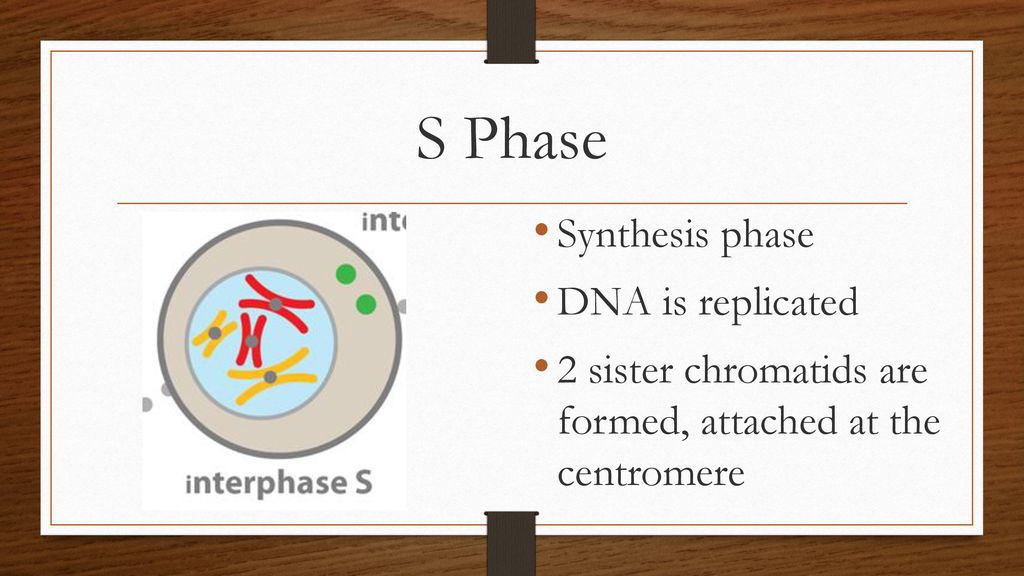A Schematic to show the processes involved during S Biology Diagrams In the eukaryotic cell cycle, chromosome duplication occurs during " S phase " (the phase of DNA s ynthesis) and chromosome segregation occurs during "M phase" (the m itosis phase). DNA duplication occurs during S phase (S for synthesis), which requires 10-12 hours and occupies about half of the cell-cycle time in a typical mammalian cell. After S phase, chromosome segregation and cell division occur in M phase (M for mitosis), which requires much less time (less than an hour in a mammalian cell).

The accurate transition from G1 phase of the cell cycle to S phase is crucial for the control of eukaryotic cell proliferation, and its misregulation promotes oncogenesis. During G1 phase, growth-dependent cyclin-dependent kinase (CDK) activity The cell cycle has two major phases: interphase (G0, G1, S, G2) and the mitotic phase (M). The cell cycle is an ordered series of events involving cell growth and cell division that produces two new daughter cells. S phase (Synthesis phase) is the phase of the cell cycle in which DNA is replicated, occurring between G 1 phase and G 2 phase. [1] Since accurate duplication of the genome is critical to successful cell division, the processes that occur during S-phase are tightly regulated and widely conserved.

Phases Of Cell Cycle G0 G1 S G2 M Biology Diagrams
Molecular events in G1 set the stage for DNA replication in S phase. Likewise, a collection of molecular processes governs orderly progression through S phase in preparation for G2 phase. Decades of intense investigation using a variety of experimental systems have identified key DNA replication proteins and their regulators in G1 and S. The Best Structure for S Phase DNA Replication S phase, or the synthesis phase, is one of the most important stages in the cell cycle. During S phase, the DNA in the cell is copied, so that each new cell will have its own complete set of DNA. The structure of S phase is highly regulated to ensure that the DNA is copied accurately and efficiently. Let's take a closer look at some of the key

Figure 6.3 A cell moves through a series of phases in an orderly manner. During interphase, G1 involves cell growth and protein synthesis, the S phase involves DNA replication and the replication of the centrosome, and G2 involves further growth and protein synthesis. The mitotic phase follows interphase. Mitosis is nuclear division during which duplicated chromosomes are segregated and
